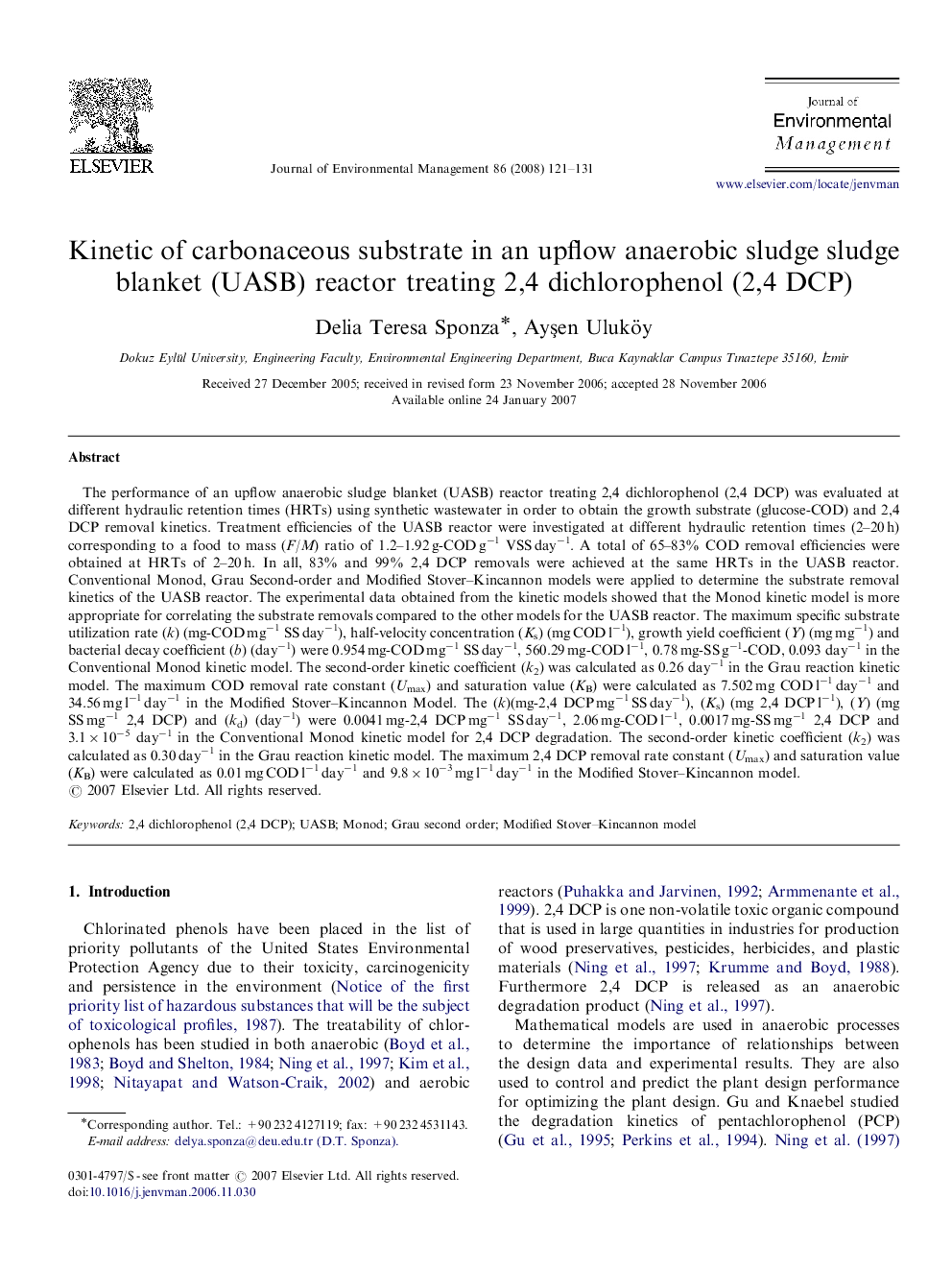| Article ID | Journal | Published Year | Pages | File Type |
|---|---|---|---|---|
| 1058368 | Journal of Environmental Management | 2008 | 11 Pages |
The performance of an upflow anaerobic sludge blanket (UASB) reactor treating 2,4 dichlorophenol (2,4 DCP) was evaluated at different hydraulic retention times (HRTs) using synthetic wastewater in order to obtain the growth substrate (glucose-COD) and 2,4 DCP removal kinetics. Treatment efficiencies of the UASB reactor were investigated at different hydraulic retention times (2–20 h) corresponding to a food to mass (F/M) ratio of 1.2–1.92 g-COD g−1 VSS day−1. A total of 65–83% COD removal efficiencies were obtained at HRTs of 2–20 h. In all, 83% and 99% 2,4 DCP removals were achieved at the same HRTs in the UASB reactor. Conventional Monod, Grau Second-order and Modified Stover–Kincannon models were applied to determine the substrate removal kinetics of the UASB reactor. The experimental data obtained from the kinetic models showed that the Monod kinetic model is more appropriate for correlating the substrate removals compared to the other models for the UASB reactor. The maximum specific substrate utilization rate (k) (mg-COD mg−1 SS day−1), half-velocity concentration (Ks) (mg COD l−1), growth yield coefficient (Y) (mg mg−1) and bacterial decay coefficient (b) (day−1) were 0.954 mg-COD mg−1 SS day−1, 560.29 mg-COD l−1, 0.78 mg-SS g−1-COD, 0.093 day−1 in the Conventional Monod kinetic model. The second-order kinetic coefficient (k2) was calculated as 0.26 day−1 in the Grau reaction kinetic model. The maximum COD removal rate constant (Umax) and saturation value (KB) were calculated as 7.502 mg COD l−1 day−1 and 34.56 mg l−1 day−1 in the Modified Stover–Kincannon Model. The (k)(mg-2,4 DCP mg−1 SS day−1), (Ks) (mg 2,4 DCP l−1), (Y) (mg SS mg−1 2,4 DCP) and (kd) (day−1) were 0.0041 mg-2,4 DCP mg−1 SS day−1, 2.06 mg-COD l−1, 0.0017 mg-SS mg−1 2,4 DCP and 3.1×10−5 day−1 in the Conventional Monod kinetic model for 2,4 DCP degradation. The second-order kinetic coefficient (k2) was calculated as 0.30 day−1 in the Grau reaction kinetic model. The maximum 2,4 DCP removal rate constant (Umax) and saturation value (KB) were calculated as 0.01 mg COD l−1 day−1 and 9.8×10−3 mg l−1 day−1 in the Modified Stover–Kincannon model.
